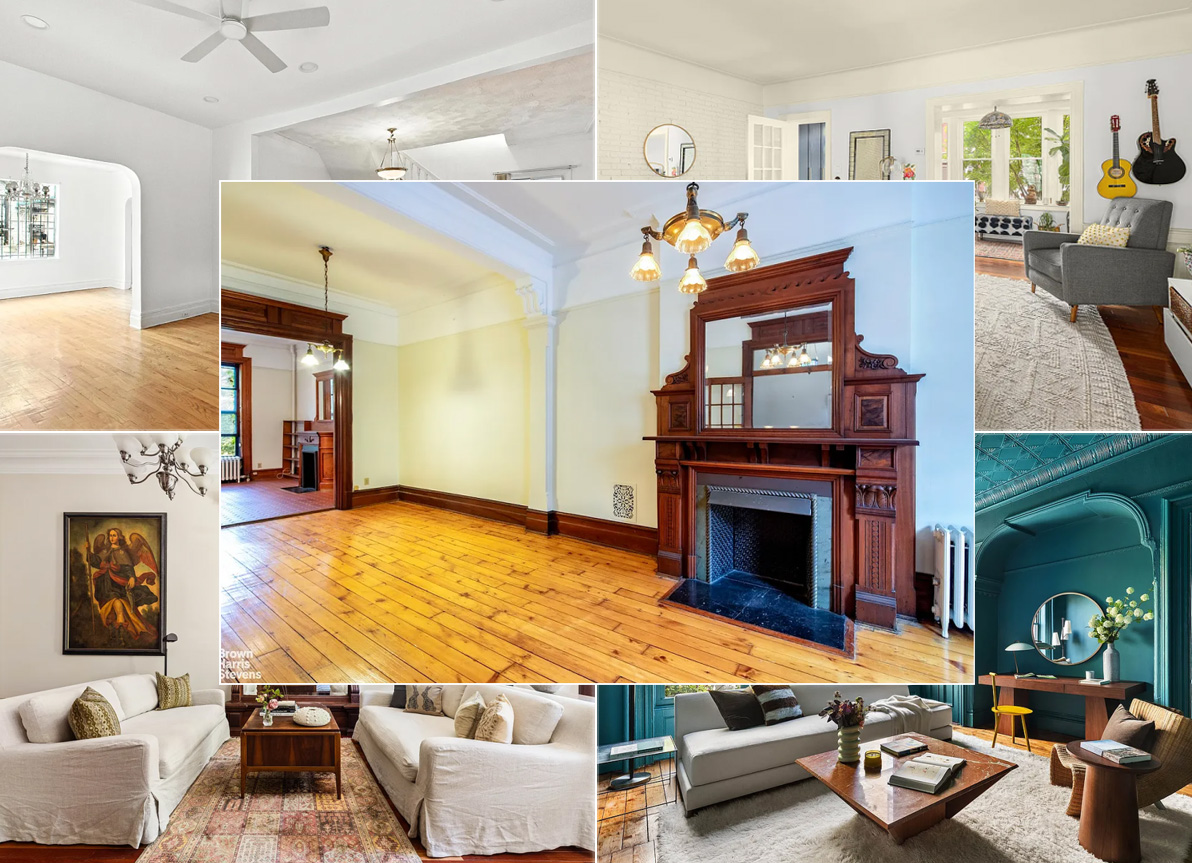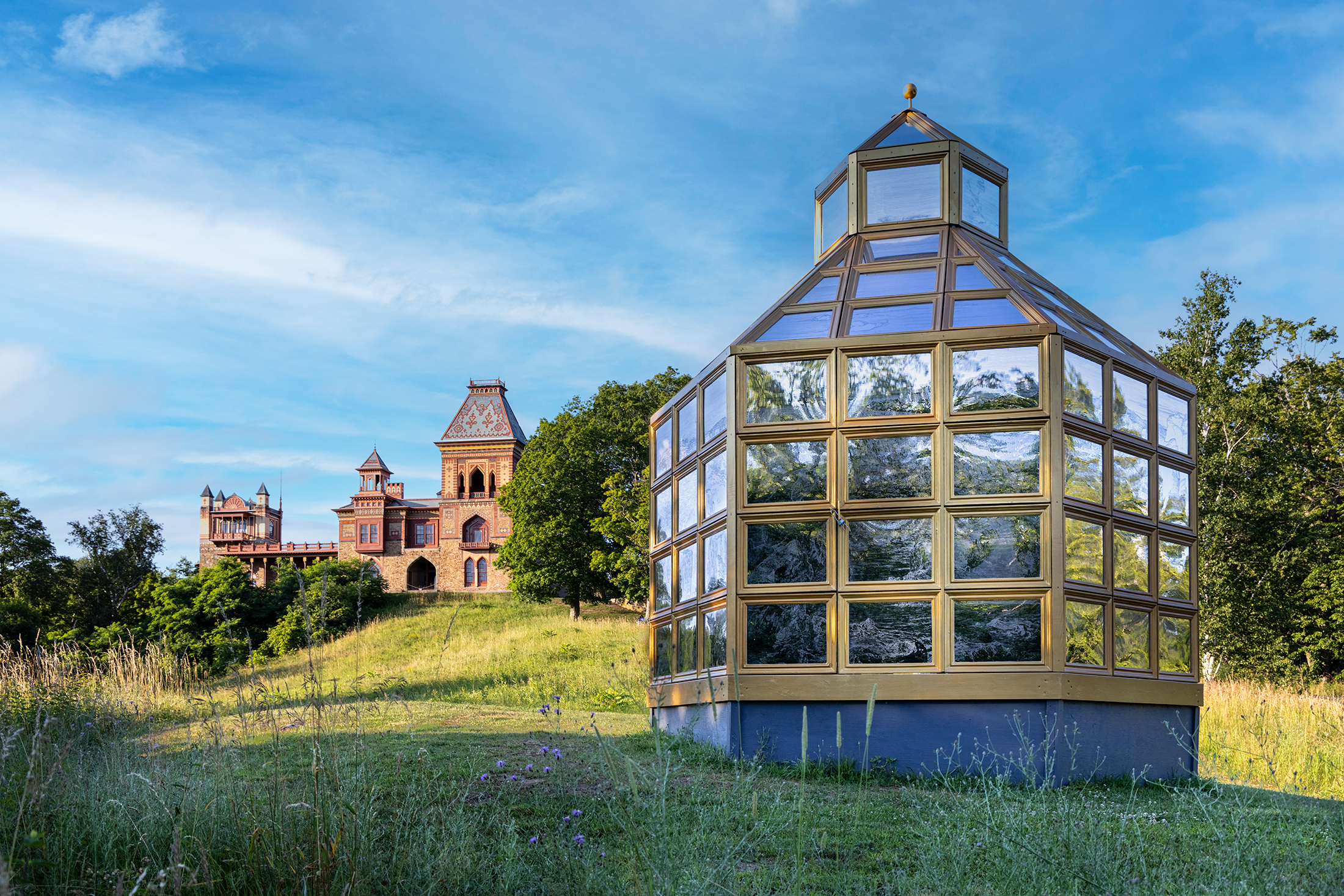Building of the Day: 387-89 Stuyvesant Avenue
Brooklyn, one building at a time. Name: Miracle Temple Apostolic Holiness Church Address: 387-89 Stuyvesant Avenue Cross Streets: corner of Bainbridge Street Neighborhood: Stuyvesant Heights Year Built: 1888 Architectural Style: Queen Anne Architect: George P. Chappell Other buildings by architect: In Crown Heights – 96 New York Ave, 175-177 New York Avenue, 979 Park Place,…

Brooklyn, one building at a time.
Name: Miracle Temple Apostolic Holiness Church
Address: 387-89 Stuyvesant Avenue
Cross Streets: corner of Bainbridge Street
Neighborhood: Stuyvesant Heights
Year Built: 1888
Architectural Style: Queen Anne
Architect: George P. Chappell
Other buildings by architect: In Crown Heights – 96 New York Ave, 175-177 New York Avenue, 979 Park Place, St. Bartholomew’s Episcopal Church, and many other row houses and other buildings in Central Brooklyn and Park Slope.
Landmarked: Yes, part of Stuyvesant Heights HD, 1971
The story: The Krupp Steel and Gun Works, of Essen, Germany, was one of Europe’s most prominent companies, begun in the very early 1800’s. They were a family company, and Alfred Krupp, son of the founder, was responsible for much of their success. Under his supervision, the company made many innovations in steel, and was a huge manufacturer of everything from railroad train wheels and rails to cannon and other munitions. It was at the height of their 19th century success that they branched out; exporting their products to the United States, and their American agent was Thomas Prosser & Son, of Stuyvesant Heights.
The Prosser’s were no strangers to steel. Their company, Thomas Prosser & Son, was a manufacturer of steel products, mostly plumbing parts, boilers and the like. Thomas Prosser, Sr. was an engineer, and held several patents for innovations in steam boilers, water cocks, and similar products. They began representing Krupp interests in the US in 1848, putting them in position to profit from the railroad expansion out West, the Gold Rush, the Civil War, and beyond. This success enabled them to buy quite a bit of land in this part of town, and they had several large family houses on Stuyvesant Avenue, with grounds stretching along Stuyvesant, Decatur and Bainbridge. The land had been purchased from the Lefferts family, which had owned much of central Brooklyn up until the mid 19th century.
Thomas Prosser II. was very active in Brooklyn politics, charity and education. He was especially keen on education, and tried to get on the Board of Education, and was on several education committees for the Eastern District. He and the family were also active in charity work and appeared at many of the upper crust society events. He was also an avid yachtsman.
In 1888, Thomas II had architect George P. Chappell design this fine brick house on land the family owned. It is a large Romanesque/Queen Anne style home, with Romanesque details in the arched ground floor entrance and window, echoed by the arched third floor windows. The Romanesque detailing continues in the rough stone band courses and mixture of materials. The Queen Anne elements are the general mixture of tower and turret, the once-slate roof, and the decorative elements in the dormer, and just under the roofline. The house also has a broad expanse along Bainbridge St. and once had much more garden space and grounds around it.
George Chappell is a familiar name in this part of Brooklyn; he lived next door in the St. Marks District, and is one of the most prolific architects in what is now Crown Heights North. There he designed at least four other free-standing brick houses, some of which share a lot of the general details of this one. It is classic Chappell.
The Prosser family sold off most of their land at the turn of the 20th century, keeping only this house. The elegant limestones across the street on Stuyvesant Avenue, as well as the brownstones on Bainbridge were once on their property. Several of their other homes were torn down for the limestones in 1910. The family moved out to Long Island. Thomas Prosser II died at the age of 80 in 1934. Krupps is still in business and going strong.
This last Prosser house was home to the Miracle Temple Apostolic Holiness Church when the property was landmarked, along with the rest of the block and surrounding neighborhood, in 1971. GMAP









Cool I live in this house now. Its cool to know the story behind it.